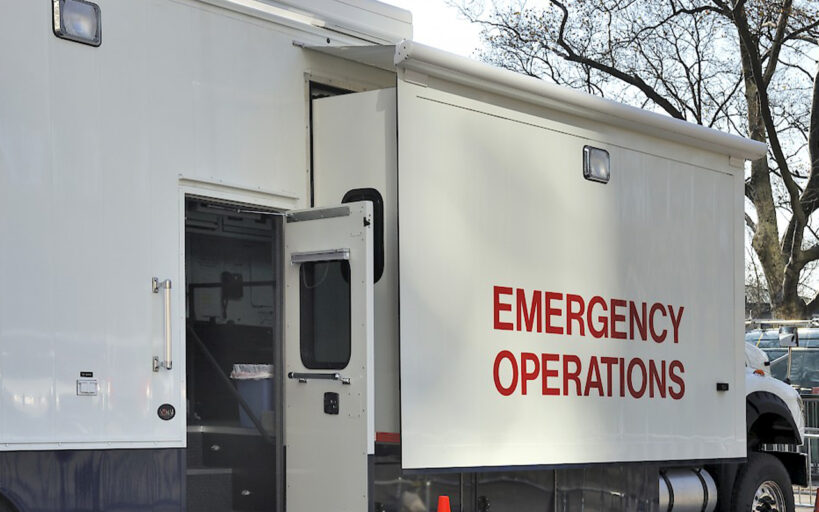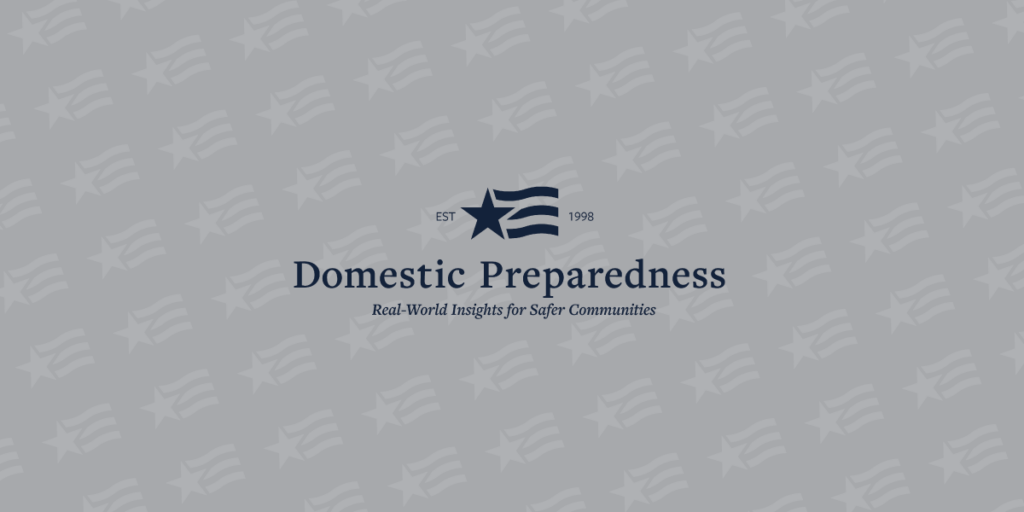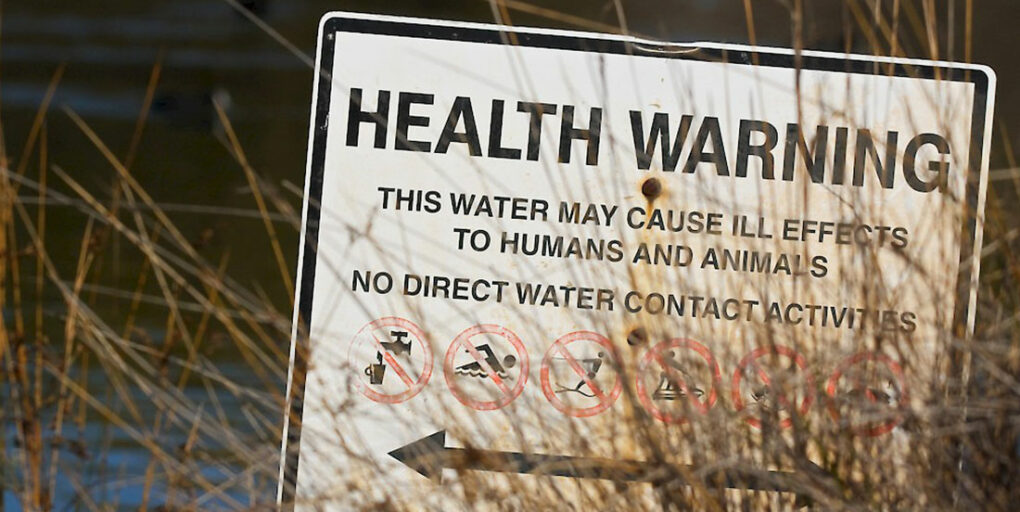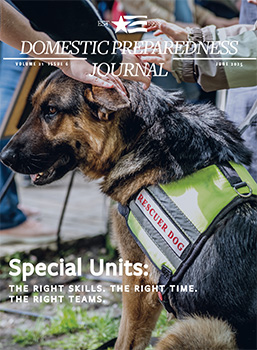Today's Top Picks

Situational Awareness & How to Obtain It
Emergency management is a dynamic field filled with numerous personalities managing ever-changing environments. Some emergency managers handle disastrous events on a yearly basis compared with others who go their entire careers without facing a single disaster. They maneuver unique political landscapes, manage robust emergency management offices, or work in offices of one. In any setting, one of the critical tools found within the emergency manager’s toolbox is maintaining situational awareness.

Crisis Leadership – Doing More With Less
During a crisis, leaders must be able to adapt and operate in an uncertain environment. In doing so, leaders are required to make more consequential and challenging decisions with less information and less time to decide. They also have fewer options to consider and likely garner more scrutiny for their actions. This examination of key case studies provides current leaders with lessons learned from effective and ineffective leadership decisions in the past.

Trauma Lessons Learned From a School Shooting
At the end of the school day on 14 February 2018, a former student entered Marjory Stoneman Douglas High School (MSDHS) in Parkland, Florida, and committed a mass murder on the campus that forever changed numerous lives and an entire community. During the attack, 17 students and staff were killed and another 17 were injured. Approximately 3,500 students and staff were not physically injured, but most definitely affected by the active shooter attack.

Gene Drives – An Emerging Terrorist Threat
Conventional acts of terrorism will likely never fade away, and advancements in technology will continually raise concerns for governments and global security practitioners. The increasing threat and possibility of chemical, biological, radiological, nuclear, and explosive (CBRNE) use is evolving. Terrorist groups are actively seeking materials and the expertise to manufacture and utilize those materials in future operations. One of the frontiers in terrorism today involves a developing technology known as “gene drives.”

Environmental Health – Profoundly Local & Profoundly Useful
Nutrition, community resilience, and poverty are just a few factors that are of great importance to public health professionals, which include representatives for maternal and child health, preparedness, nutrition, epidemiology, and land use planning, among others. However, the second largest segment of the public health workforce – the environmental health (EH) profession – bridges the gaps within the public health discipline as well as between public health and other disciplinary sectors.

Combating Pandemic Threats – Global Health Security Agenda
On 6-8 November 2018, global health leaders from around the globe met in Bali, Indonesia, for the 5th Global Health Security Agenda (GHSA) Ministerial Meeting. At the meeting, the GHSA launched a five-year plan to address health security issues called GHSA 2024 and U.S. Health and Human Services Deputy Secretary Eric Hargan reaffirmed U.S. support for the GHSA with a pledge of $150 million. This global efforts and this commitment of resources to strengthen the capacity to prevent, detect, and respond to infectious diseases are clearly needed.
Trending
 Bridging Communication Gaps: Lessons from Hurricane Helene by Greg Hauser Hurricanes in 2024 caused widespread damage to infrastructure, leading to a critical but often overlooked issue: isolation. Physical and technological…
Bridging Communication Gaps: Lessons from Hurricane Helene by Greg Hauser Hurricanes in 2024 caused widespread damage to infrastructure, leading to a critical but often overlooked issue: isolation. Physical and technological… A Systems Thinking Approach to Improving Emergency… by William Chapman “PACE” planning helps organizations fail gracefully, but systems thinking reduces the likelihood of failure altogether. Combining both approaches helps organizations…
A Systems Thinking Approach to Improving Emergency… by William Chapman “PACE” planning helps organizations fail gracefully, but systems thinking reduces the likelihood of failure altogether. Combining both approaches helps organizations… Disaster Stress Management in an Emergency Operations Center by Mary Schoenfeldt Disasters affect responders and community members, but they also bring trauma to those working inside emergency operations centers. Distance from…
Disaster Stress Management in an Emergency Operations Center by Mary Schoenfeldt Disasters affect responders and community members, but they also bring trauma to those working inside emergency operations centers. Distance from… Why Emergency Management Is a Good Career for… by Mathew Perrill For many service members, the transition from the military to a civilian workforce can be challenging. They have been trained…
Why Emergency Management Is a Good Career for… by Mathew Perrill For many service members, the transition from the military to a civilian workforce can be challenging. They have been trained…Trending
 Disaster Stress Management in an Emergency Operations Center by Mary Schoenfeldt Disasters affect responders and community members, but they also bring trauma to those working inside emergency operations centers. Distance from…
Disaster Stress Management in an Emergency Operations Center by Mary Schoenfeldt Disasters affect responders and community members, but they also bring trauma to those working inside emergency operations centers. Distance from… Why Emergency Management Is a Good Career for… by Mathew Perrill For many service members, the transition from the military to a civilian workforce can be challenging. They have been trained…
Why Emergency Management Is a Good Career for… by Mathew Perrill For many service members, the transition from the military to a civilian workforce can be challenging. They have been trained… Bridging Communication Gaps: Lessons from Hurricane Helene by Greg Hauser Hurricanes in 2024 caused widespread damage to infrastructure, leading to a critical but often overlooked issue: isolation. Physical and technological…
Bridging Communication Gaps: Lessons from Hurricane Helene by Greg Hauser Hurricanes in 2024 caused widespread damage to infrastructure, leading to a critical but often overlooked issue: isolation. Physical and technological… A Systems Thinking Approach to Improving Emergency… by William Chapman “PACE” planning helps organizations fail gracefully, but systems thinking reduces the likelihood of failure altogether. Combining both approaches helps organizations…
A Systems Thinking Approach to Improving Emergency… by William Chapman “PACE” planning helps organizations fail gracefully, but systems thinking reduces the likelihood of failure altogether. Combining both approaches helps organizations…Trending
Bridging Communication Gaps: Lessons from Hurricane Helene by Greg Hauser Hurricanes in 2024 caused widespread damage to infrastructure, leading to a critical but often overlooked issue: isolation. Physical and technological…
A Systems Thinking Approach to Improving Emergency… by William Chapman “PACE” planning helps organizations fail gracefully, but systems thinking reduces the likelihood of failure altogether. Combining both approaches helps organizations…
Disaster Stress Management in an Emergency Operations Center by Mary Schoenfeldt Disasters affect responders and community members, but they also bring trauma to those working inside emergency operations centers. Distance from…
Why Emergency Management Is a Good Career for… by Mathew Perrill For many service members, the transition from the military to a civilian workforce can be challenging. They have been trained…
Domestic Preparedness Journal
Featured in this issue
- Special Units and Underutilized Resources
- Law Enforcement and Multidisciplinary Teams
- Public Order Policing Units in Disasters
- State Defense Forces in Emergency Response
- Emergency Carcass Operations
- Wildfire PREsponse: Closing the Gap With Mitigation
- Scouts and the Value of Prepared Youth
- Service Dogs: What First Responders Need to Know
- Emergency Management for Transitioning Veterans
- Podcast – Reframing Hurricane Response: Craig Fugate on Survivors as a First Line of Defense
- Podcast – Built to Serve: Chief Jeffrey J. Wittig on TIFMAS, Teamwork, and Emergency Response
Articles Out Loud

Article Out Loud – Law Enforcement Collaboration Within Multidisciplinary Teams
June 25, 2025
This is an article by Richard Schoeberl and Anthony (Tony) Mottola, an Article Out Loud from Domestic Preparedness, June 25,

Article Out Loud – State Defense Forces: The Untapped Backbone of Emergency Response
June 25, 2025
This is an article by Robert Hastings, an Article Out Loud from Domestic Preparedness, June 25, 2025. As disasters become





Editor’s Note – Special Units and Underutilized Resources